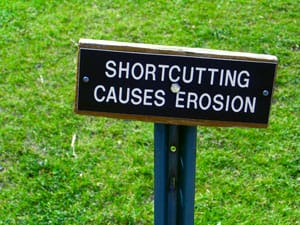
How to Provide Easy and Accurate Provisional Restorations
 Provisional restorations play a far more important role than just a transitional role while the laboratory fabricates the definitive restoration. Of course they function to protect the dentin and pulp from thermal, chemical, mechanical and bacterial damage, but there is much more.
Provisional restorations play a far more important role than just a transitional role while the laboratory fabricates the definitive restoration. Of course they function to protect the dentin and pulp from thermal, chemical, mechanical and bacterial damage, but there is much more.
They are adjusted for ideal esthetics, phonetics and function. Provisional restorations provide the dentist, patient and dental laboratory with in vivo information, as the patient test drives the restoration. Especially when changing esthetics and function, feedback is obtained regarding contour, shape, incisal edge position, overall esthetics and function. When dealing with periodontal procedures, such as grafting, crown lengthening and implants, they serve as a great healing evaluation tool. Accurate records including photographs and mounted models of patient approved temporaries provide the laboratory with a functional prescription for the definitive restorations.
Whether the treatment plan is a few single restorations or a full mouth rehabilitation, the first step is always a Comprehensive Examination. Once we have confirmed stable dental health, the treatment planning process can proceed.
There are 2 patient scenarios that I will describe.
Patient 1: Stable function, no esthetic wants and minor restorative needs, such as a quadrant or less
My dental assistant takes a PVS quadrant impression in a triple tray, which is evaluated for voids in hard and soft tissue. After the preparation(s) and firstretraction cord, the triple tray is filled with a Bis-acryl material, such as Structur or Pro-temp. The material sets in 90 seconds & then placed in room temperature water for a minute. The temporary can be trimmed with the Dawson provisional kit, while the final impression is being taken. This technique provides an accurate temporary with well-fitting margins and biological contours.
Patient 2 : Esthetic and functional issues and has many more challenges
The examination process now includes mounted models with a centric bite and the Dawson photographic series. The accuracy of these records incorporating all tooth, gingival and vestibular areas is of paramount importance. The age old adage of garbage-in, garbarge- out applies, so make sure to do a thorough examination and take accurate records.
The next step is quiet thinking time and utilizing the Functional-esthetic analysis checklist. This checklist creates a problem list that includes the biological, structural, functional, and esthetic components of a smile. It helps create a vision with the end in mind. That vision is then translated into the 3D architectural plan, the wax-up. The wax-up that incorporates the findings from the FE checklist is one of the most important steps for consistent predictable success.
Prior to the appointment, my dental assistants fabricate from the wax-up the Siltec Putty matrix that has been relined with a light bodied PVS , and place it on the articulator to register the opposing arch to guide the matrix accurately. We also make a Mini-Star vacuum formed clear matrix on a solid model of the wax-up. This clear matrix acts as a guide to visualize clearance and also can be used as a provisional matrix.
After the preparations are completed, we utilize either the Bis-acryl lock-on or the Bis-acryl remove and contour technique to fabricate the provisionals. After the margins and gingival embrasures have been developed, the 10 step provisional adjustment guide developed by Dr. Dawson is utilized in the mouth. Phonetics, incisal length, centric stops, anterior guidance and long centric are all developed.
The patient is re-appointed with-in a week for refinement, verification and after approval, records. These records include mounted models of the approved provisionals and the Dawson photographic series. Matrices and a custom incisal guide table are fabricated by the lab to communicate all the information. The definitive restorations are then created without guesswork.
This technique provides reliable, predictable and accurate provisionals that allow restorative dentistry to be less stressful and fun. Follow these steps and you will see successful provisional restorations.
Resources:
- Journal of Cosmetic Dentistry vol 28 issue 3 pg 65-73
- Functional Occlusion: From TMJ to Smile Design









Leave a Reply
Want to join the discussion?Feel free to contribute!